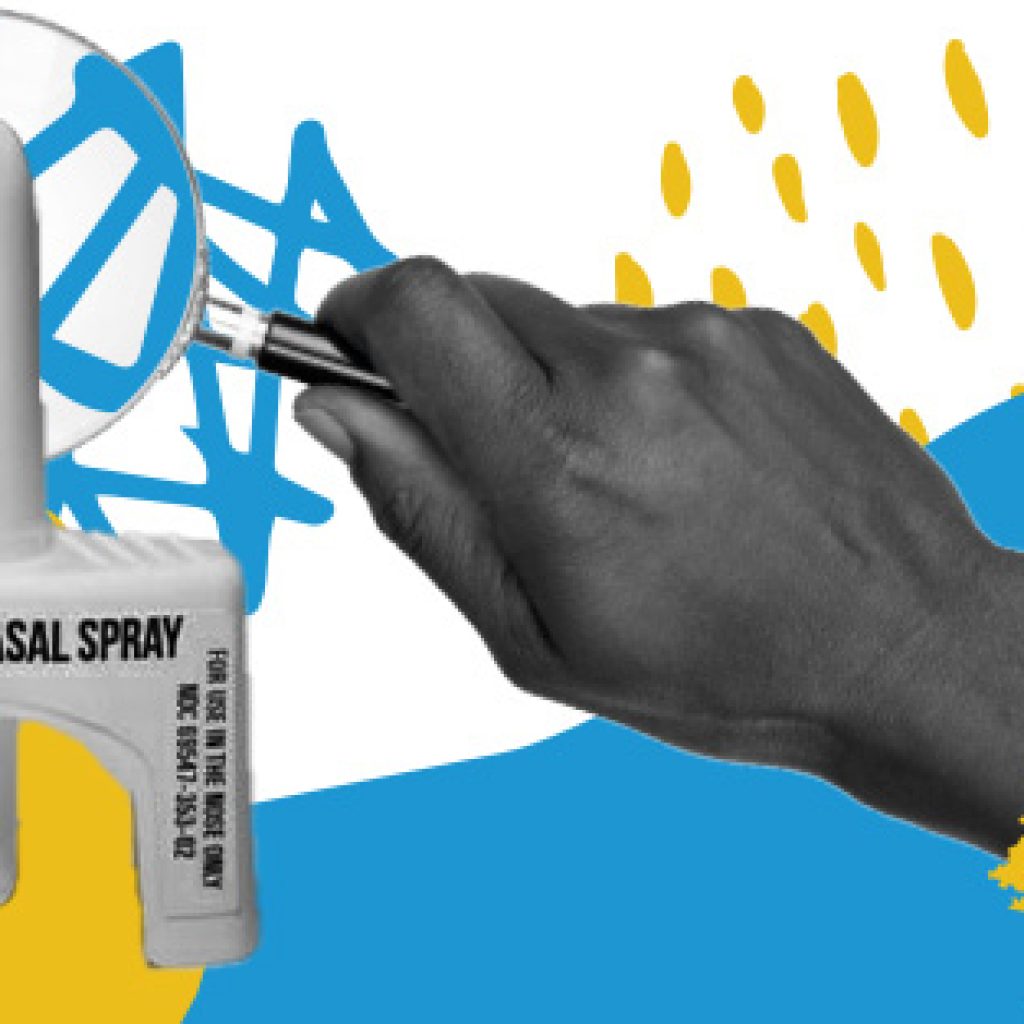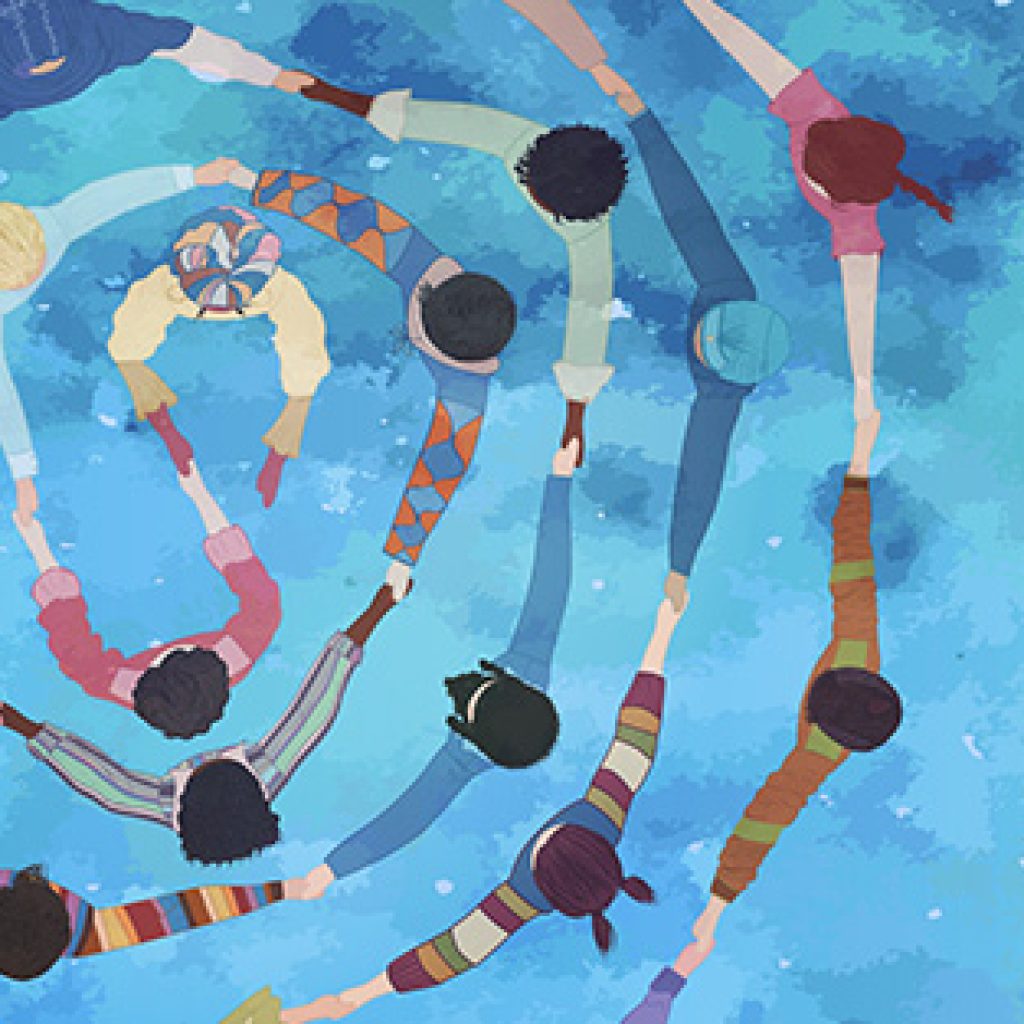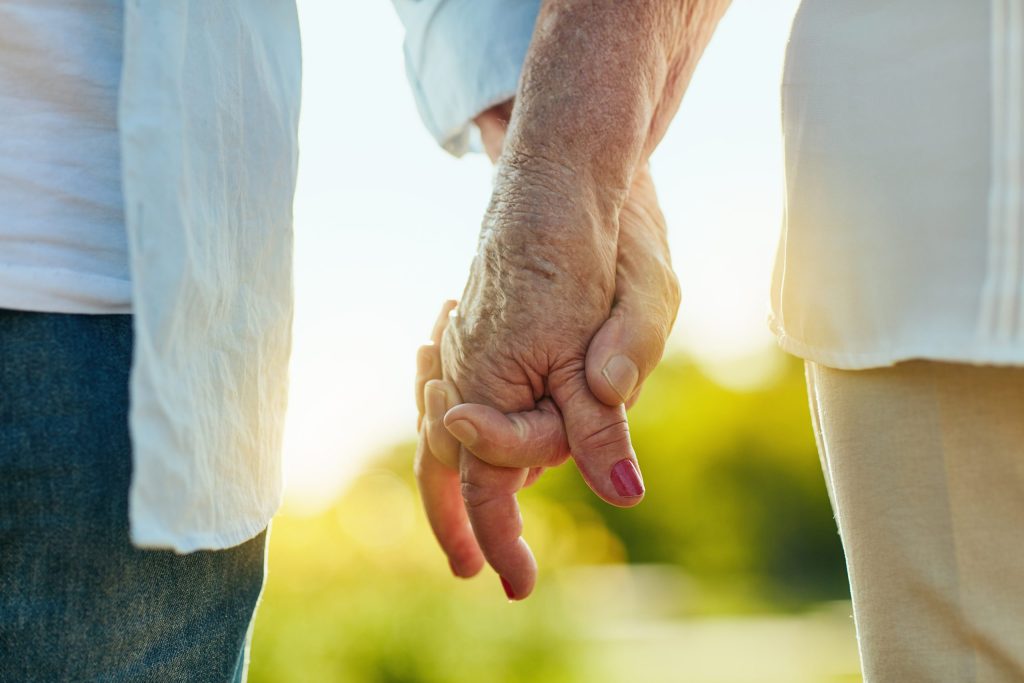Promoting Resilience During Domestic Violence Awareness Month
Promoting Resilience During Domestic Violence Awareness Month
UPDATED for 2021 With New Research, Information, and Resources!
Why Is Intimate Partner Violence (IPV) An Important Topic?
Intimate Partner Violence (IPV) is defined by the World Health Organization (WHO) as “any behavior within an intimate relationship that causes physical, psychological, or sexual harm to those in the relationship” and pointed it out as the most common form of violence against women worldwide (WHO, 2012). IPV affects both genders and every type of intimate relationship, including marital, dating, parental, heterosexual and same-sex relationships. The WHO reports that approximately 35% of people claim to have experienced violence from their intimate partners (Garcıa-Moreno et al., 2013).
Important Issues Identified By IPV Research
IPV is a multidimensional issue (Santambrogio et al., 2019). Research shows that this type of violence is the result of volatile dynamics between individual, relational, community, and societal influences (Garcıa-Moreno et al., 2006) Different forms of violence benefit from clinical treatment based on the type of violence involved (e.g., physical, psychological, and sexual violence (Garofalo & Velotti, 2017; Gillespie et al., 2018). What puts two people in a relationship at risk for IPV is a complex interplay between systems, the influence of different system levels, and the interactions between the individuals and contexts, and are different for victims and perpetrators. One theoretical approach that has been used to understand the relational dynamics in IPV is attachment theory, or the need for a bonding relationship with a meaningful person (Castellano, Velotti, & Zavattini, 2014; Velotti et al., 2020). A meta-analysis of studies examined the relationship between attachment and IPV perpetration for two dimensions of attachment: anxiety and avoidance. The meta-analysis found that most of the included studies found support for the anxiety dimension of attachment being a trigger for violence. The same analysis of the avoidance dimension found weaker evidence of it being a trigger (Velotti et al., 2020). More research is needed for confirmation and particularly to explore potential mediators of these triggers. The study authors offered the following implications for treatment for clinicians treating IPV couples:
- Difficulty in regulating negative emotions needs to be treated.
- Dysfunctional expectations of significant others should be assessed and treated.
- Interventions to reduce recidivism need to include accurate assessment of anxiety and avoidance.
- The transgenerational nature of attachment dimensions and the tendency to perpetrate should be considered during treatment and in future research.
- Interventions should be specific to the type of violence (i.e., physical, psychological, or sexual).
- While age was “not a significant moderator of the association between attachment and IPV perpetration…gender did have a significant role” and future studies would clarify attachment mechanisms at the base of IPV perpetration to separate the two issues (Velotti et al., 2020).
Risk and protective factor theory has been applied to IPV perpetration, and exists in multiple contexts: individual, relational, community, and societal. Risk and protective factors are also correlated and cumulative, meaning that risk factors tend to be positively correlated with other risk factors and negatively correlated with protective factors. Risk and protective factors are cumulative in that the more risk factors present in a person’s life, the less likely they are to have protective factors and the more influence risk factors are likely to have, as is illustrated in the video Moving Forward, provided by the Centers for Disease Control (CDC). While a complete list and additional information can be found on the CDC Intimate Partner Violence website, some of the risk and protective factors for IPV by category are:
Individual Risk Factors
- Low self-esteem
- Low income
- Low academic achievement/low verbal IQ
- Young age
- Aggressive or delinquent behavior as a youth
- Heavy alcohol and drug use
Relationship Risk Factors
- Dominance and control of the relationship by one partner over the other
- Economic stress
- Unhealthy family relationships and interactions
- Association with antisocial and aggressive peers
- Parents with less than a high-school education
- Social isolation/lack of social support
Community Risk Factors
- Low social capital-lack of institutions, relationships, and norms that shape a community’s social interactions
- Poor neighborhood support and cohesion
- Weak community sanctions against IPV (e.g., unwillingness of neighbors to intervene in situations where they witness violence)
- High alcohol outlet density
Societal Risk Factors
- Traditional gender norms and gender inequality (e.g., women should stay at home, not enter workforce, and be submissive; men support the family and make the decisions)
- Cultural norms that support aggression toward others
- Societal income inequality
- Weak health, educational, economic, and social policies/laws
Relationship Protective Factors
- High friendship quality
- Social support (e.g., tangible help, support from neighbors)
Community Protective Factors
- Neighborhood collective efficacy (i.e., community cohesiveness/support/connected-ness, mutual trust, and willingness to intervene for the common good)
- Coordination of resources and services among community agencies
Supporting All Survivors: The National Center on Domestic Violence, Trauma, and Mental Health (NCDVTMH)
The NCDVTMH is committed to providing approaches that are accessible, culturally responsive and trauma-informed for assisting survivors (Zapata-Alma, 2020). To these ends, the NCDVTMH has developed a variety of training opportunities and resources to support survivors in the areas of health, mental health, substance misuse, legal, and child welfare fields and for policymakers and government officials. Resources are based on recent research and are informed by domestic violence survivors even if they remain in an abusive relationship or do not stop using substances. One such resource is Committed to Safety for ALL Survivors: Guidance for Domestic Violence Programs on Supporting Survivors Who Use Substances (Zapata-Alma, 2020). The guidance document offers questions to be used for both reflection and discussion to help equip providers for meeting the needs of survivors of DV and advocating for them. A few of the many resources and strategies found within the guide are the following topics:
Why might survivors continue to use substances?
Understanding the dimensions of substance use;
Meeting people where they are in relation to substance use;
How to support survivor safety and choice within substance use;
Overdose prevention
Resources that support safety, healing, and empowerment
These topics are just a few of the many insights provided in the guide, and the Appendices contain more useful information, such as a Glossary of Terms, Myths and misconceptions about substances and substance use, Naloxone instructions, safer bathrooms information, and more. Additional materials and resources to supplement the information can be found on the NCDVTMH website.
Professional Development Opportunity
For clinicians and other providers who want to learn about the consequences of IPV on mental health and substance use disorder treatment and recovery, the following self-paced, online course is available from CASAT Learning.
Understanding the Dimensions of Substance Use and Why Survivors of Domestic Violence May Continue to Use Substances
Presenter: Gabriela Zapata-Alma, LCSW, CADC, Director of Policy and Practice for Domestic Violence and Substance Use at the National Center on Domestic Violence, Trauma & Mental Health, as well as faculty at The University of Chicago, where they coordinate the Advanced Alcohol and Other Drug Counselor certification program. Her biography from the workshop description at CASAT Learning is as follows:
“Gabriela brings over 15 years of experience supporting survivors of domestic violence and other trauma, as well as people impacted by housing instability, HIV/AIDS, substance use disorders, and mental health conditions; providing bilingual (Spanish and English) counseling, training, advocacy, and consultation; and leading programs using trauma-informed approaches, Motivational Interviewing, harm reduction, gender-responsive care, Housing First, and third-wave behavioral interventions. Gabriela has been recognized with numerous awards, including Health & Medicine Policy Research Group’s 2018 Health Award, and the 2017 Rising Star Award from the Illinois chapter of National Association for Addiction Professionals (NAADAC). Gabriela provides clinical supervision and trauma-focused counseling services locally, as well as training and technical assistance related to serving marginalized communities impacted by trauma and other social determinants of health nationally and internationally.”
“This training provides a framework for unpacking the uniquely personal dynamics of substance use experiences, including information on intersecting factors that contribute to ongoing substance use for survivors of domestic violence (DV). Through understanding the layers of complexity involved in substance use, counselors and recovery support specialists will be prepared to respond with deeper empathy, active listening, individualized approaches, safety planning strategies, and collaborative partnerships with survivors. This training will also help clarify the connections between substance use and domestic violence, as well as offer trauma-informed strategies for opening conversations about substance use and domestic violence within substance use disorder, mental health, and recovery support services.”
Register for this exciting professional development opportunity at CASAT Learning.
Domestic Violence Awareness Month (DVAM)
Since October 1987 when the first nationwide Domestic Violence Awareness Month event was held, DVAM has provided a way for individuals and organizations to connect while advocating and raising awareness for DV. The DVAM website contains a variety of resources, including the #WeAreResilient Toolkit, which includes:
- Details about NCADV and DVAM
- Ideas and suggestions for DVAM in the Time of COVID-19
- Information about Domestic Violence (including graphics, links to blog posts and fact sheets, and online resources)
- Samples and Templates
- More Ways to #PowerUp with NCADV
The #WeAreResilient Toolkit can be obtained on the DVAM website.
Do you have resources to share with your colleagues on this important topic? Please post them in the comments section.
Resources
Selected Phone and Internet Resources
Hotlines
National Domestic Violence Hotline (800) 799SAFE (800) 7993224
Rape, Abuse, and Incest National Network (RAINN) (800) 6564673
Child Help USA/National Child Abuse Hotline (800) 4ACHILD
General Resources
National Coalition Against Domestic Violence (303) 8391852
National Victim Center (NVC)/Infolink (800) FYICALL
American College of Obstetricians and Gynecologists (ACOG) (202) 6385577
Other Services
Center for the Prevention of Sexual and Domestic Violence (206) 6341903
Domestic Violence Project/Face to Face (800) 8424546
Domestic Violence Training Project (800) 8653699
Family Violence and Sexual Assault Institute (903) 5345100
American Bar Association Commission on Domestic Violence
From the U.S. Department of Defense:
- 2020 Domestic Violence Awareness Month Toolkit;
- Domestic Violence Awareness Month 2020 Information Flyer – Five Ways to Help a Friend Who’s Experiencing Domestic Abuse;
- Domestic Violence Awareness Month 2020 Messaging and Resource Guide
Relevant Catalyst blog posts from CASAT OnDemand:
- Sexual Assault Awareness Month 2020 #SAAM #IAsk
- Anger: Helping Behavioral Health Clients to Choose Their Responses to This Very Normal Emotion
- Adverse Childhood Experiences: A Public Health Crisis That is Treatable and Preventable
- Sexual Assault Awareness Month
Find more resources, links, and materials in the CASAT OnDemand Resources & Downloads page.
References
Castellano, R., Velotti, P., & Zavattini, G. C. (2014). What makes us stay together? Attachment and the outcomes of couple relationships. Karnac Books
Center for Substance Abuse Treatment. Substance Abuse Treatment and Domestic Violence. Treatment Improvement Protocol (TIP) Series, No. 25. HHS Publication No. (SMA) 12-4076. Rockville, MD: Substance Abuse and Mental Health Services Administration, 1997.
Garcıa-Moreno, C., Jansen, H. A., Ellsberg, M., Heise, L., & Watts, C. H. (2006). WHO multi-country study on women’s health and domestic violence against women study team. Prevalence of intimate partner violence: findings from the WHO multi-country study on women’s health and domestic violence. Lancet, 368(9543), 1260–1269. https://doi.org/10.1016/S0140-6736(06)69523-8
Garcıa-Moreno, C., Pallitto, C., Devries, K., Stockl, H., Watts, C., & Abrahams, N. (2013). Global and regional estimates of violence against women: Prevalence and health effects of intimate partner violence and non-partner sexual violence. World Health Organization.
Garofalo, C., & Velotti, P. (2017). Negative emotionality and aggression in violent offenders: The moderating role of emotion dysregulation. Journal of Criminal Justice, 51, 9–16. https://doi.org/10.1016/j.jcrimjus.2017.05.015
Gillespie, S., Garofalo, C., & Velotti, P. (2018). Emotion regulation, mindfulness, and alexithymia: Specific or general impairments in sexual, violent, and homicide offenders? Journal of Criminal Justice, 58, 56–66. https://doi.org/10.1002/ab.21868
Santambrogio, J., Colmegna, F., Trotta, G., Cavalleri, P. R., & Clerici, M. (2019). Intimate partner violence (IPV) and associated factors: An overview of epidemiological and qualitative evidence in literature. Rivista di Psichiatria, 54(3), 97–108. http://dx.doi.org/10.1708/3181.31598
Spencer, C. M., Stith, S. M., & Cafferky, B. (2020). What puts individuals at risk for physical intimate partner violence perpetration? A meta-analysis examining risk markers for men and women. Trauma, Violence & Abuse, , 152483802092577. doi:10.1177/1524838020925776
Velotti, P., Rogier, G., Beomonte Zobel, S., Chirumbolo, A., & Zavattini, G. C. (2020). The relation of anxiety and avoidance dimensions of attachment to intimate partner violence: A meta-analysis about perpetrators. Trauma, Violence & Abuse, 152483802093386. doi:10.1177/1524838020933864
World Health Organization. (2012). Understanding and addressing violence against women: Overview. Author. https://apps.who.int/iris/handle/10665/77433
Zapata-Alma, GA. (2020). Committed to Safety for ALL Survivors: Guidance for Domestic Violence Programs on Supporting Survivors Who Use Substances. Chicago, IL: National Center on Domestic Violence, Trauma, and Mental Health (NCDVTMH).
This article was developed by Stephanie Asteriadis Pyle, PhD at CASAT. Feel free to use, link to, or distribute this information. A link to our site and attribution would be much appreciated. Suggested citation:
Asteriadis Pyle, S. (2021, October 6). Promoting Resilience During Domestic Violence Awareness Month 2021 #WeAreResilient . CASAT OnDemand. Retrieved October 6, 2021, from https://casatondemand.org/2021/10/06/domestic-violence-awareness-month-responding-to-the-needs-of-those-in-treatment-and-recovery/.
Blog Post Tags:
Related Blog Posts
Related Learning Labs
Related Resources
.
- Buscar Tratamiento de Calidad para Trastornos de uso de Sustancia (Finding Quality Treatment for Substance Use Disorders Spanish Version)
- Finding Quality Treatment for Substance Use Disorders
- Focus On Prevention: Strategies and Programs to Prevent Substance Use
- Monthly Variation in Substance Use Initiation Among Full-Time College Students
- The National Survey on Drug Use and Health (NSDUH) Report: Monthly Variation in Substance Use Initiation Among Adolescents








